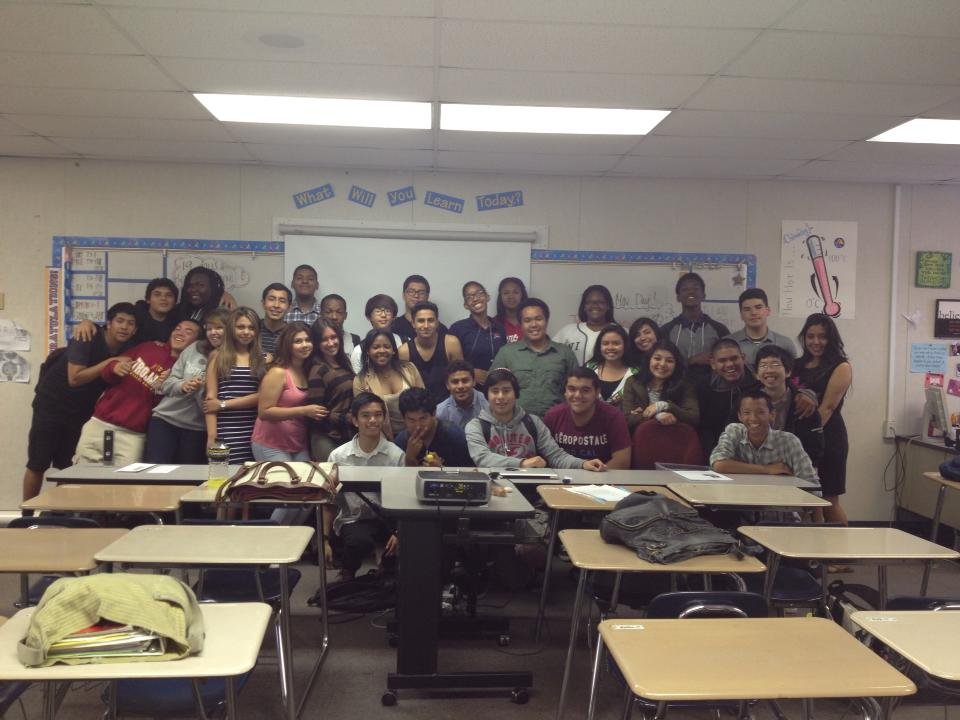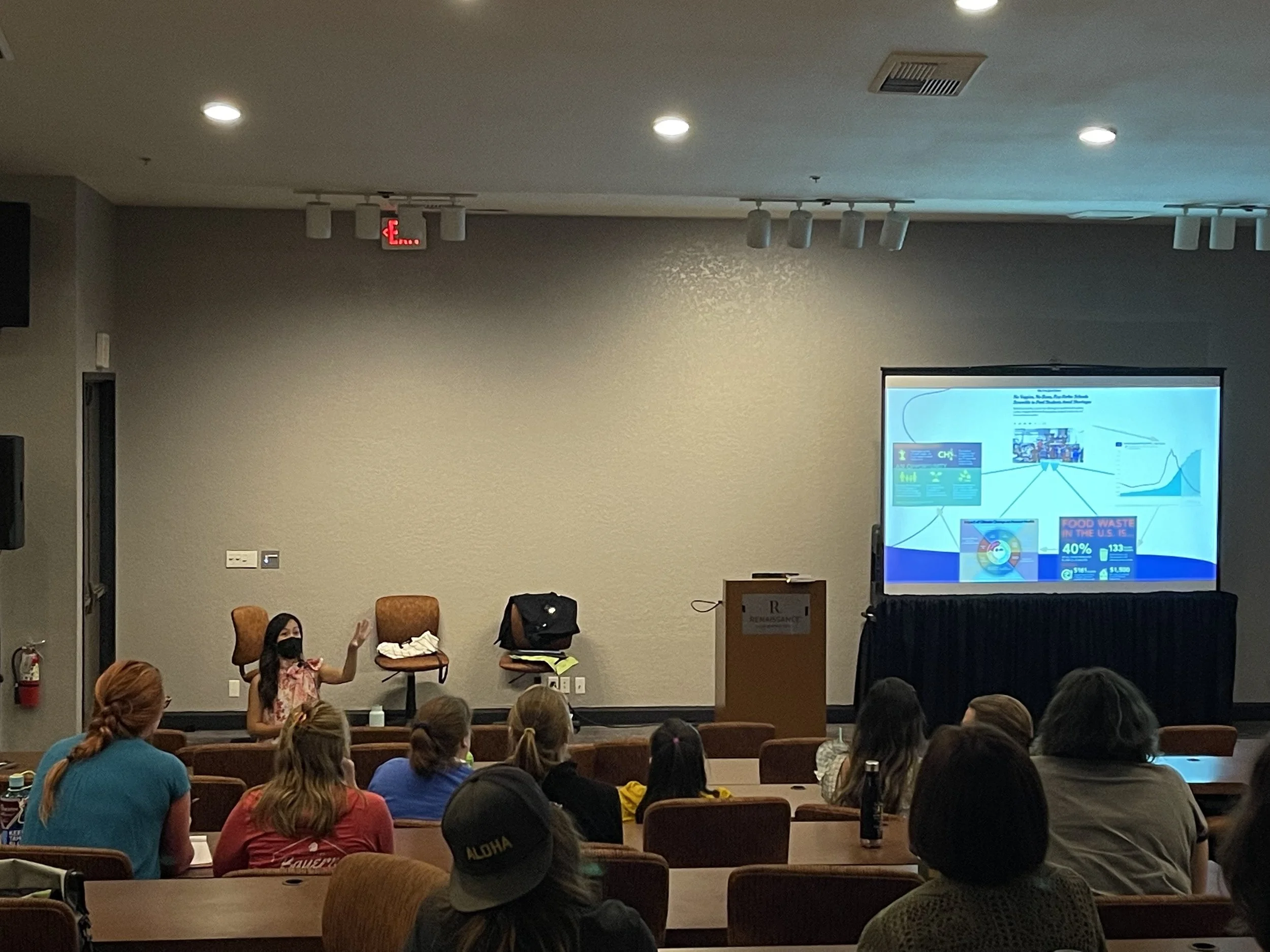Kelley Lê
My Climate Story
As the former Director of the Science Project at UC Irvine, my team and I committed to re-envisioning science education for the 21st century through a culturally relevant and responsive lens and tending to anti-racist science pedagogy through our programming. My educational and research experiences supported my depth of understanding, but what truly drives this work is my lived reality and firsthand experiences of environmental injustice and the power of education.
When preparing my keynote as the inaugural Executive Director of ECCLPs for the (Re)Launch event, my conversations with Jothsna helped me realize that these experiences were part of my climate story - and that it could be powerful if I told it that way. Growing up, environmental injustice never crossed my mind because I found so much joy and connection in our community (being sustainable was part of our survival practices). I did not realize in my childhood, what I know now, that it was balanced with the daily undercurrent of pollution and environmental traumas that we were experiencing while going about living our lives.
I grew up in Gardena, the ancestral land of the Tongva people, where we lived just a few houses away from the 110 freeway. Our neighborhood was bordered by a giant freeway wall that stretched as far as the eye could see. Although I couldn’t name it at the time, I know now that my community was bombarded by light, noise, and air pollution, which impacted our collective health and well-being. Perhaps the sense of strong community and moments of joy shielded us from knowing or accepting the slow and silent death that comes from these environmental injustices. I remember playing alongside that wall, never questioning its construction, expansion, or reason for existence in my neighborhood. Before he left, my father was a neighborhood gardener, so our house was always surrounded by lush plants, flowers, and trees. Without his efforts to care for and cultivate our little green space, it would be one of the few places in my neighborhood (also surrounded by casinos and train tracks) where I could feel like I was part of nature. Although I have fond memories of this community, I also remember my neighborhood friends with asthma and heart conditions. At the time, we never thought to ask about the source of these health conditions. It was not until later in life that I understood the connections between acute sources of pollution often cited in communities of color as purposeful design and the implications on our lives. It’s clear to me now that environmental injustice is not coincidental.
It is critical that we have knowledge of these interconnections and that we all work to unveil these hidden systems so that others can clearly understand the repercussions. Meeting Jothsna and talking about the importance of our personal stories to balance the science - and as a way to advocate for solutions - made me realize that I need to share about my own experiences to shed light on these issues.
We eventually moved from Gardena to the neighboring community of Hawthorne, where I would later begin my science teaching career. Our new home was downwind from a refinery, which unfortunately could not be a limiting factor for my mother, who now carried the weight and financial burden of being a single parent of three. Aside from exposure to more air pollution and hazardous chemicals, what’s wild is that our apartment was located directly behind the home my mom and her family of six lived in as refugees from the Viet Nam war. The exposure and the impacts were multigenerational.
My educational journey as a first-generation student in higher education equipped me with the critical lens needed to understand and begin questioning underlying systemic injustices in place. As I learned more about pollution in my community, I felt strongly about returning to uplift and support young students as a high school chemistry teacher. Teaching chemistry through a social justice lens helped motivate my students to see science as a useful tool for understanding and questioning the world around them in ways that push them to be the drivers of relevant solutions.
In my early teaching years, I remember emails from administrators gently notifying us that the refinery was releasing toxic chemicals to explain the colored air. The emails also stated that it was safe for students to be outside despite what we were seeing or smelling. In 2015, the refinery had an explosion that released chemicals into the air. The resulting debris nearly missed the hydrofluoric acid tank, which contains chemicals so dangerous it can corrode bones and burn lungs if released. I brought it up to school leadership, taking it as far as the district office who cited reports from Air Quality Management District (AQMD) showing acceptable air quality levels (although it’s now known that refineries like this one emit up to 12 times more toxic chemicals than previously reported). My gut kept telling me that the data indicated a different story than the reality of our situation. My husband was also a teacher in the district, and we were both the kind of teachers that came early and stayed late, and our students became like family to us. I could not stop worrying about my students, and there was a real sense of urgency to help them unveil these critical intersections, ask questions, identify solutions, and perhaps most importantly, equip them with the skills and tools to activate their agency for positive change.
Since my high school teaching career, I have also served as a California instructional coach, professional learning provider, university lecturer, researcher, and educational leader. Throughout the years, I have witnessed the power teachers have to enact positive change in their schools, which can greatly impact future generations. These are teachers who intentionally shift power dynamics in the classroom to elevate student ideas and voices about school or community-related issues. From studying water quality in school fountains to demand access to clean water, organizing school exhibits on environmental issues with a call to action, or creating “no-waste” lunch policies that encourage students to leave unwanted food items at the end of a lunch line for others or donation to local shelters. These opportunities to apply science content and technology to tackle everyday challenges are what help to activate student agency around complex issues. These teachers are cognizant that schooling is a cultural act as one of the paradigm shifts needed to support 21st-century learning. From personal experience, I know that in order to employ transformative teaching, deep reflection of one's personal beliefs and values about teaching and learning is required.
These experiences propelled me to pursue my dissertation at UCLA (and book publication), believing that just as we do for science, we must ask essential questions about our systems that are often unjust and heavily informed by people’s underlying beliefs and values. Jonathan Foley, Executive Director of Project Drawdown, once said, “A solution is only a solution so long as it is used - and that if it is absent of culture, context, or the current needs of today then it is all but theoretical.” This lens is incredibly relevant to 21st-century science teaching and learning. Teaching climate change in culturally relevant and responsive ways allows students to drive their learning experiences. We also need to continue to reflect on who benefits from the current education system and who was historically and is still currently being left behind. Then take that same approach when looking at the root causes of climate change and the flawed systems that continue to perpetuate injustices hiding in plain sight.
There are many ways we can bring in data around these questions to think critically about what our young people are experiencing and the injustices they become aware of and begin to challenge. But it is essential for our students to see themselves in the environmental and climate change movements to help sustain these initiatives. My journey made me realize the importance of sharing my lived experiences because it was so rare to learn about Asian people (especially other Southeast Asian women) disrupting unjust spaces. Not seeing others that I identify with undoubtedly shaped my views of the climate and environmental justice movements, and as a result, continues to influence how I lead today.
It wasn’t until I owned my climate story that I felt my voice, perspective, and expertise were needed. To realize that we cannot understand climate and environmental justice through data alone, even when unbiased, we must also include our lived experiences and the humanity of the crisis we are trying to solve. My climate story is not over, but my experiences are authentic, and they matter, and they help shape how I think about policy and communication, as well as what drives me in this work. Our student's climate stories matter too, and helping them articulate what climate change means for them will shape who they are as leaders. As I continue to collaborate, connect, and think about how we will engage with each other in this work, I’m constantly reminded that the “How” is never more important than the “Why.”










